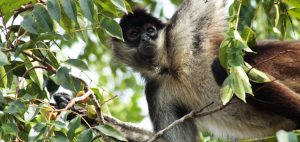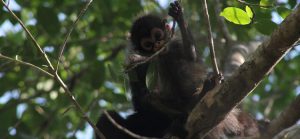Jeff Elison, Ph.D.
Research
Much of my research focuses on emotion-regulation and self-conscious emotions (shame, guilt, embarrassment, humiliation). I approach these emotions from evolutionary, cultural, and developmental perspectives. From the evolutionary perspective, I view emotions as universal adaptations, so I am also interested in the related social selection pressure – the threat presented by disapproval, rejection, and loss of status. Emotion-regulation includes the various ways we respond to self-conscious emotions, both adaptive and maladaptive. I developed the Compass of Shame Scale (CoSS), a self-report measure of shame-focused coping styles. The CoSS has been translated to 13 other languages. Colleagues and I have applied the CoSS in studying psychological symptoms, aggression, sports, education, and development.
Select Publications
McGrath, D., & Elison, J. (2014). Vertical Mind. Boulder, CO: Sharp End Publishing.
Elison, J., & Dansie, E. J. (2011). Humiliation. In R. J. Levesque (Ed.). Encyclopedia of Adolescence (pp. 1342-1351). New York, New York: Springer.
Elison, J., & Harter, S. (2007). Humiliation: Causes, correlates, and consequences. In J. L. Tracy, R. W. Robins, & J. P. Tangney (Eds.), The self-conscious emotions: Theory and research (pp. 310-329). New York: Guilford Press.
Elison, J., Garofalo, C., & Velotti, P. (2014). Shame and aggression: Theoretical considerations. Aggression and Violent Behavior, 19(4), 447-453.
Velotti, P., Elison, J., & Garofalo, C. (2014). Shame and aggression: Different trajectories and implications. Aggression and Violent Behavior, 19(4), 454-461.
Elison, J., & Partridge, J. A. (2012). Relationships between shame-coping, fear of failure, and perfectionism in college athletes. Journal of Sport Behavior, 35(1), 19-39.
Partridge, J. A., & Elison, J. (2010). Shame in sport: Issues and directions. Journal of Contemporary Athletics, 4(3), 197-210.
Elison, J., Lennon, R., & Pulos, S. (2006). Investigating the compass of shame: The development of the Compass of Shame Scale, Social Behavior and Personality, 34, 221-238.
Elison, J., Pulos, S., & Lennon, R. (2006). Shame-focused coping: An empirical study of the compass of shame, Social Behavior and Personality, 34, 161-168.
Elison, J. (2005). Shame and guilt: A hundred years of apples and oranges. New Ideas in Psychology, 23, 5-32.
Campbell, J. S. & Elison, J. (2005). Shame coping styles and psychopathic personality traits. Journal of Personality Assessment, 84, 96-104.
Pulos, S., Elison, J., & Lennon, R. (2004). The hierarchical structure of the Interpersonal Reactivity Index. Social Behavior and Personality, 32, 355-360.
Rena Kirkland
Research
My research interests span educational psychology, social cognition, aging, and psychometrics. Currently, I am examining the relationship between student grit and parenting practices, which could inform how parents can foster raising gritty children. In collaboration with faculty from other universities, we are developing an instrument to measure college students deliberate practice of study skills. We are also examining methods for increasing student engagement and attention during college lectures. Beyond my personal research pursuits, I enjoy mentoring students in their research interests.
Publications and Presentations
Poynton, J., Kirkland, R. A., & Makela, C. (Forthcoming). Organizational training and relationship building: Superintendents increasing public participation in public school districts. School Community Journal
Kirkland, R. A., Baker, C. A., Marsden, J., & Kois, H. (April, 2018). Experience Sampling of Movement-Integrated Learning in Psychology Courses. Poster accepted at annual convention Rocky Mountain Psychological Association, Denver, CO.
Rhoads, M., Baker, C. A., & Kirkland, R. A. (2018, April). Increasing student engagement using movement-integrated learning activities. Teaching Takeout Presentation at Rocky Mountain Psychological Association Annual Conference, Denver, CO.
Kirkland, R. A., Post, K., Valadez, M., Ellenberger, B., & Baker, C. A. (April, 2017). Can Grit be Learned? An Exploration of Parental Influences on Elementary and Secondary Students’ Grit. Poster accepted at annual convention Rocky Mountain Psychological Association, Salt Lake City, UT.
Baker, C. A., Post, K., Kirkland, R. A., & Valadez, M. (April, 2017). The Impact of Grit on Attributions, Effort-Related Beliefs, Homework Practices, and Self-Esteem in Children. Poster accepted at annual convention Rocky Mountain Psychological Association, Salt Lake City, UT.
Poynton, J., & Kirkland, R. (April, 2016). Organizational Training and Relationship Building for Increasing Parent Engagement in Five Public School Districts. Presented paper in Symposium Format, annual conference Midwest Political Science Association, Chicago, IL.
Baker, C. A., Peterson, E., Pulos, S., & Kirkland, R. A. (2014). Eyes and IQ: A meta-analysis of the relationship between general ability and “Reading the Mind in the Eyes Test”. Intelligence, 44, 78-92.
Kirkland, R, A., Peterson, E., Baker, C. A., Miller, S. & Pulos, S. (2013). Meta-analysis reveals adult female superiority in “Reading the Mind in the Eyes Test.” North American Journal of Psychology, 15(1), 121-146.
Colleen M. Schaffner, PhD.

Research
My principal research has examined the regulation of social relationships in New World monkeys for over 25 years. My focus is on the establishment and maintenance of social relationships. This has involved the long-term systematic investigation of social behavior in wild and captive populations. My research has also entailed the study of polymorphic color vision in wild spider monkeys, animal welfare and captive management and most recently conservation. Depending on the question under investigation my research also involves hormonal, ecological and genetic data. All the research I conduct is original and unique either in addressing new scientific questions or in its approach to addressing an already established research issue.
The primary subject of my research involves the longest uninterrupted study of the social lives of spider monkeys, a New World primate whose behavior may be a key facet to understanding the evolution of human behavior. The research involves three different wild populations of individually recognized spider monkeys, two in the Yucatan peninsula of Mexico and one in Northwestern Costa Rica.
Since moving to Adams State University I have turned my attention to human primates and examine how movement (exercise) benefits the emotion well-being of middle and high school students in the San Luis Valley: Movement for the Mind.

Publications 2018-2021
Busia, L., Denice, A., Aureli, F. & Schaffner, C.M. (2018). Homosexual behavior between male spider monkeys (Ateles geoffroyi). Archives of Sexual Behavior, 47, 857-861. doi.org/10.1007/s10508-018-1177-8
Busia, L., Smith-Aguilar, S., Aureli, F., Schaffner, C.M., & Ramos-Fernandez, G. (2018). Predation attacks on wild spider monkeys (Ateles geoffroyi). Folia primatologica, 89, 341-346. DOI 10.1159/000492005
Ramos-Fernandez, G., King, A.J., Beehner, J.C., Bergman, T. J., Margaret C. Crofoot, M. C., Di Fiore, A., Lehmann, J., Schaffner, C.M., Snyder-Mackler, N., Zuberbuhler, C.,Aureli, F. & Boyer, D. (2018). Quantifying uncertainty due to fission-fusion dynamics as a
component of social complexity. Proceedings of the Royal Society of London B, 285, DOI: 1098/rspb/2018.0532
Smith-Aguilar, S.E., Aureli, F., Busia, L., Schaffner, C.M. & Ramos-Fernández, G. (2019). Using multiplex networks to capture the multidimensional nature of social structure. Primates, 60: 277-295. https://doi.org/10.1007/s10329-018-0686-3
Spaan, D., Ramos-Fernández, Schaffner, C.M., Smith-Aguilar, S., Pinacho-Guendulain, B. & Aureli, F. (2019). Standardizing methods to estimate population density: an example based on habituated and unhabituated spider monkeys. Biodiversity and Conservation, DOI 10.1007/s10531-018-01696-2.
Busia, L., Schaffner, C.M., & Aureli, F. (2019). Watch out! Insecure relationships affect vigilance in wild spider monkeys (Ateles geoffroyi). Behavioral Ecology & Sociobiology, 73:159 https://doi.org/10.1007/s00265-019-2773-x.
Smith-Aguilar, S.E., Aureli, F., Busia, L., Schaffner, C.M. & Ramos-Fernández, G. (2019). Using multiplex networks to capture the multidimensional nature of social structure. Primates, 60: 277-295. https://doi.org/10.1007/s10329-018-0686-3
Spaan, D., Ramos-Fernández, Schaffner, C.M., Smith-Aguilar, S., Pinacho-Guendulain, B. & Aureli, F. (2019). Standardizing methods to estimate population density: an example based on habituated and unhabituated spider monkeys. Biodiversity and Conservation, DOI 10.1007/s10531-018-01696-2.
Busia, L., Schaffner, C.M., & Aureli, F. (2019). Watch out! Insecure relationships affect vigilance in wild spider monkeys (Ateles geoffroyi). Behavioral Ecology & Sociobiology, 73:159 https://doi.org/10.1007/s00265-019-2773-x
Powers, J.S., Vargas, G., Brodrib, T. J., Schwartz, J. B., Perez-Avilesa, D., Smith-Martin, C. M., Becknell, J.M., Aureli, F., Blanco, R., Calderón-Moralesa, E., Calvo-Alvarado, J.C., Calvo-Obando, A.J., Chavarría, M.M., Carvajal-Vanegas, D., Jiménez-Rodríguez, C.D., Murillo Chacon, E., Schaffner, C.M., Werden, L. K., Xu, X., & Medvigym, D. (2020). Catastrophic tropical drought kills hydraulically vulnerable tree species. Global Change Biology, 26, 3122-3133 https://doi.org/10.1111/gcb.15037
Melin, A. D., Jack, K. M., Hogan, J.D., Campos, F.A., Wiberg, E., King-Bailey, G., Webb, S., Kalbitzer, U., Asensio, N., Murillo-Chacon, E., Cheves Hernandez, S., Guadamuz Chavarria, A., Schaffner, C.M., Kawamura, S., Aureli, F., & Fedigan, L. (2020). Contributions from long-term research on three primate species in the Área de Conservación Guanacaste, Costa Rica. Biotropica, 52, 1041-1064 https://doi.org/10.1111/btp.12867
Campos, F., Kalbitzer, U., Melin, a., Hogan, J., Cheves, S., Murillo-Chacon, E., Myers, M., Schaffner, C.M., Jack, K., Aureli, F., & Fedigan, L. (2020). Differential impact of severe drought on infant mortality in two sympatric neotropical primates. Royal Society Open Science, 7, 200302. http://dx.doi.org/10.1098/rsos.200302
Murray, L., Schaffner, C. M., Aureli, F., & Amici, F. (2020). There is no other monkey in the mirror for spider monkeys (Ateles geoffroyi). Journal of Comparative Psychology, 134(3), 323–329. https://doi.org/10.1037/com0000243
Saldaña Sanchez, A.A., Aureli, F., Busia, L., & Schaffner, C.M. (2020). Who’s there? Third parties affect social interactions between male spider monkeys. Behaviour, 157: 761-780. https://doi.org/10.1163/1568539X-bja10021
Spaan, D., Ramos-Fernández, Bonilla-Moheno, M. Schaffner, C.M., Slater, K., Morales- Mavil, J. E., & Aureli, F. (2020). Anthropogenic habitat disturbance and food availability affect the abundance of an endangered primate: a landscape-scale approach. Mammalian Biology, 100, 325-333. https:// 10.1007/s42991-020-00025-x
Spaan, D., Ramos-Fernández, Bonilla-Moheno, M. Schaffner, C.M., & Aureli, F. (2021). The Impact of the establishment of Otoch Ma’ax Yetel Kooh Protected Area (Yucatan, Mexico) on populations of two neotropical primates. PARKS, 27, 35-42.
Publications pre-2018
Busia, L., Schaffner, C.M. & Aureli, F. (2016). Watch out or relax? The role of conspecifics in vigilance of wild spider monkeys (Ateles geoffroyi). Behaviour, 153: 107–124. 42.
Busia, L., Schaffner, C.M., Rothman, J. & Aureli, F. (2016). Do fruit nutrients affect fission decisions in wild spider monkeys? International Journal of Primatology, 37: 738-751. DOI:10.1007/s10764-016-9935-8
Anna-Aguayo, A.I., Schaffner, C.M., Golubov, J., García-Franco, J., Herrera-Meza, G. & Martínez, A. J. (2017). Behavioral repertoires and interactions between Apis mellifera (Hymenoptera: Apidae) and the native bee Lithurgus littoralis (Hymenoptera: Megachilidae) in flowers of Opuntia huajuapensis (Cactaceae) in the Tehuacán desert. Florida Entomologist, 100: 396-402. DOI: 10.1653/024.100.0242
Asensio, N., Schaffner, C.M. & Aureli, F. (2017). The effect of roads on spider monkeys’ home range and mobility in a heterogeneous regenerating forest. Biotropica, 49: 546-554. DOI:10.1111/btp.12441
Busia, L., Schaffner, C.M., & Aureli, F. (2017). Relationship quality affects fission decisions in wild spider monkeys (Ateles geoffroyi). Ethology, 123: 05-411.DOI:10.1111/eth.12609
Riveros, J.C., Aureli, F. & Schaffner, C.M. (2017). You are not welcome: Social exchanges between female spider monkeys (Ateles geoffroyi). International Journal of Primatology: 38, 856 – 871. DOI: 10.1007/s10764-017-9982-9
Spaan, D., Ramos-Fernández, G., Schaffner, C.M., Pinacho-Guendulain, B. & Aureli, F. (2017). How survey design affects monkey counts: A case study on individually recognized spider monkeys (Ateles geoffroyi). Folia Primatologica, 88, 409-420. DOI: 10.1159/000481796.
Busia, L., Denice, A., Aureli, F. & Schaffner, C.M. (2018). Homosexual behavior between male spider monkeys (Ateles geoffroyi). Archives of Sexual Behavior, DOI: 10.1007/s10508-018-11778
Ramos-Fernandez, G., King, A.J., Beehner, J. C., Bergman, T. J., Crofoot, M.C., Di Fiore, A., Lehmann, J., Schaffner, C.M., Snyder-Mackler, N., Zuberbuhler, K., Aureli, F., & Boyer, D. (2018). Quantifying uncertainty due to fission-fusion dynamics as a component of social complexity. Proceedings of the Royal Society B. DOI: 10:1098/rspb.2018.0532
Busia, L., Smith-Augilar, S., Aureli, F., Schaffner, C.M., & Ramos-Fernandez G. (2018, in press) Predation attacks on wild spider monkeys. Folia primatologica.
Book chapters and solicited publications
Schaffner, C.M. & Aureli, F. (2017). La dinamica de fision y fusion en monos arana. In: Naturaleza, Cerebro y Conducta (Eds.F Garcia Orduna, M. Rovisora Hernandez, J.F. Rodriguez Landa, & P. Carrillo Castilla), Universidad Veracruzana, pp. 99-117.
Schaffner, C.M.& Aureli, F. (2017). Conflict Resolution. The International Encyclopedia of Primatology. Wiley. DOI: 10.1002/9781119179313
Aureli, F. & Schaffner, C.M. (2017). Fission-Fusion Dynamics. The International Encyclopedia of Primatology. Wiley. DOI: 10.1002/9781119179313
Recent Conference Presentations
Aureli, F. & Schaffner, C. M. (2016). The “fourth chimpanzee”: Knowledge of spider monkeys can provide insight into Pan socioecology and cognition. Presented at the Joint meeting of the International Primatological Society and the American Society of Primatologists, August 21-27.
Busia, L., Schaffner, C.M., Rothman, J. & Aureli, F. (2016). Do food and relationship quality affect fission decisions in wild spiders (Ateles geoffroyi). Presented at the Joint meeting of the International Primatological Society and the American Society of Primatologists, August 21-27.
Busia, L., Denice, A., Aureli, F. & Schaffner, C.M. (2016). Intromission during grappling between male spider monkeys (Ateles geoffroyi). Presented at the Joint meeting of the International Primatological Society and the American Society of Primatologists, August 21-27.
Riveros, J.C., Schaffner, C.M.& Aureli, F. (2016). You are not welcome: Resident females attack immigrants in spider monkeys (Ateles geoffroyi). Presented at the Joint meeting of the International Primatological Society and the American Society of Primatologists, August 21-27.
Suarez Peredo Zavala, M.E., Schaffner, C.M.& Aureli F. (2016). Embraces in within- and between-group interactions in captive spider monkeys (Ateles geoffroyi). Presented at the Joint meeting of the International Primatological Society and the American Society of Primatologists, August 21-27.
Spaan, D., Ramos-Fernández, G., Schaffner, C.M., Smith-Aguilar, S.E., Pinacho-Guendulain, B. & Aureli, F. (2016). Comparing estimates of spider monkey (Ateles geoffroyi) population density in the Yucatan peninsula, Mexico. Presented at the Joint meeting of the International Primatological Society and the American Society of Primatologists, August 21-27.
Schaffner, C.M., Busia, L., Denice, A.R. & Aureli, F. (2017). Grappling explained: An intriguing social interaction in spider monkeys (Ateles geoffroyi). Presented the American Society of Primatologists 40thAnniversary Meeting, Washington D.C.



